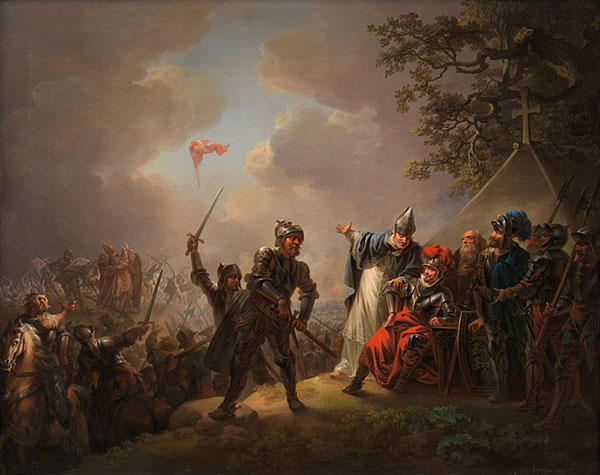Official flag flying days in 2024

Impossible to live in Denmark for long without noticing the Danes’ fascination with their flag. Spring is usually full of official flag flying days, find all of them here and a guide to the flag in our update here.
The article continues below.
Danes can find any occasion to fly their flag, however, you will find that the royals’ birthdays count for a large amount of the official ones and the first six months of the year is when the concentration is highest.
Official Dannebrog flag flying days in 2024
January
14 January: Abdication of HM Queen Margrethe and new King Frederik 10th proclaimed from Christiansborg Castle
February:
5 February HM Queen Mary’s Birthday
6 February HRH Princess Marie’s Birthday
April:
29 March Langfredag/ Good Friday
31 March Easter Sunday
April:
9 April Denmark’s occupation during the Second World War
16 April HM Queen Margrethe’s birthday – this flag flying day will most likely be maintained
29 April HRH Princess Benedikte’s birthday (Queen Margrethes sister’s birthday)
May
5 May Denmark’s liberation after the Second World War
9 May Ascension
19 May Pinsedag / Pentecost
26 May HM King Frederik’s birthday – if he follows his mother’s tradition he will appear on the balcony of his palace at Amalienborg to be cheered
June
5 June Grundlovsdag
7 June HRH Prince Joachim’s birthday
15 June Valdemarsday and Genforeningsdagen 1920
21 June Greenland’s national day ( here it will be Greenland’s flag and not Dannebrog)
July
29 July The Faraoe islands’ national day – and it will be their flag and not Dannebrog
September
5 September – in commemoration of Denmark’s fallen during international engagements
October
15 October HRH Crown Prince Christian’s birthday
December
25 December for Christmas day.
None of the other royal children have official flag flying days as they are still minors.
The article continues below.
Flag rules for Dannebrog
All public institutions must fly Dannebrog on the official flag flying days. If you are in doubt just check your local bus. If it has a flag flying, you can be sure it’s for an official occasion for instance for members of the Royal family or because of a state visit.
Private individuals or companies are under no obligation to fly it – though many do
The flag must never touch the ground when carrying it to and from the flagpole
The flag must be raised at sunrise (however never before 8:00 am) and must be lowered at sunset
What do Danes think of their flag?
We asked three Danes about their flag; what it means to them, if they know where it came from, and who else used the flag’s colours.
Lotte says:
For me Dannebrog has a symbolic value, and when I see it flying on bank holidays and other special occasions, it fills me with a more solemn feeling. Also, when I see it abroad, whatever the occasion, I feel connected to Denmark and it gives me a sense of belonging, a community feeling. I know it fell from the sky, somewhere, I don’t remember where. I don’t know who else used the flag.
Malene:
First of all parties and birthdays. And of course, my childhood memories of my father raising the flag on our birthdays in the big garden on the farm where I grew up. Or raising the flag on trips with my scout group, in the morning, taking turns, standing all together. Of course, it’s also a national symbol of unity, but first of all I see the birthday cake full of Danish flags when you ask me about it. I also think of Dannebrog as part of being Danish, and everything about our society that goes with that.
When talking to foreigners, I would mostly talk about our welfare model, if they ask me what I connect to being Danish and of course our nature, literature and music. There is a fine story about how Dannebrog fell from the sky in the 13th century, not quite the truth of course, but a good story. No, I don’t know, who else used it but I do remember a banner from the temple knight’s order that looks like it, but that is not red with a white cross, as I recall it.
Jens Jacob:
I think Dannebrog is a beautiful flag and it fills me with joy, warmth and a feeling of safety and security. I know it fell from the sky during a battle in the Baltic States, was it Lithuania? No, I don’t know who else used the banner.
The article continues below.
A bit of flag history and why is is so special
Despite Danes not being very religious, the Danish flag is actually seen as God’s own banner, which came falling down from the sky.
The story of how it happened could go something like this:
The battle had been fierce, bodies lay spread out over the field, battered and bloody, and any hope of victory seemed lost. All of a sudden, the surviving soldiers heard thunder, the dark clouds scattered, letting a few rays of sunlight shine through.
They looked at the sky above them and saw a red flag with a white cross come floating down. It was as if God had decided to send a sign to the weary men below that all hope was not lost, and that they should take the flag as a sign of God’s faith in them – enabling them to win.
The year was 1219, and Danish King Valdemar II was leading an attack in Estonia; the aim being to conquer the Estonians and to Christianise them. The actual design of the flag, with the white cross on the red background, is identical with the brand used by the crusader knight order of the Johannites.
They later became the Maltese order and their white cross was no longer simple, but had notched tips.
However, in the 13th century, they wore red cloaks with a simple white cross. So much at least for the legend, and if it is true, it would mean that Dannebrog is the oldest national flag in the world.
The name is derived from old Danish and means the “cloth of the Danes”
Historians are not quite sure how to interpret the legend, and the date and year of the battle is also somewhat contested. However, it is believed that Dannebrog, or a red flag with a white cross in it, was most likely the banner used by the Danish crusaders, who in the beginning of the 13th century made efforts to Christianise Estonia.
Due to this battle, the official Dannebrog day is celebrated every year in Denmark on Valdemar’s Day 15 June.
In Tallinn, the capital of Estonia, a memorial sculpture in the Danish Garden commemorates the spot where it is believed the flag fell from the sky.
The article continues below.
What we do know is that the flag is an important national symbol used by all Danes since the middle of the 19th century.
Up until the mid-1850s only the King and State institutions, such as the military, were allowed to use it.
However, in 1854 the law preventing ordinary Danes from using the flag was lifted.
After the infamous war against the Germans in 1864, when Denmark lost not only the war and territory to the Germans, but additionally and more importantly their feeling of being a global empire, Dannebrog became the symbol of national gathering.
Ordinary Danes began using the flag, not only on their Christmas tree but to celebrate all aspects of their own lives, weddings, and birthdays. In fact, for any celebration or festive event. And to this day, you will see the flag brought out and used for all important occasions in a Dane’s life.
An old regulation from 1915 had forbidden the use of national flags other than the Danish one, the only exceptions to that rule were diplomatic envoys from foreign states and anyone who has obtained special permission to fly their national flag as well as the EU and UN flags.
However, since a ruling in the Danish High Court from 23 June 2023, this old regulation was found invalid and thus since then the Danish Justice Department has annuled the old regulation thus making it permitted to fly other national flags.
The article continues below.
Where to buy Dannebrog and other flags
One of Denmark’s oldest flag manufacturers Dahls Flagfabrik sells a multitude of paper flags, table flags and flags for flagpoles. Even though flags with Dannebrog are the most sold ones, they are experiencing a wider use of other flags.
Certainly when major events take place, such as the international Eurovision song contest (in Denmark known as Melodi Grand Prix), World Championships or European Championships. In addition, the American Stars and Stripes is sold for Thanksgiving or presidential elections, the Super bowl and so on.
“When Crown Prince Frederik married Mary Donaldson of Australia in 2004 we sold 10,000 Danish as well as 10,000 Australian flags to Wonderful Copenhagen, and we had many foreign (and Danish) journalists asking for information about the use of the Danish flag,” says Brian Nielsen from Dahls Flagfabrik.”
Should you venture to fly Dannebrog from your flagpole – be aware that there are a number of unwritten rules about how to do so and when to take it up and down.
In fact, in order to help spread knowledge and make sure it is done correctly, a special NGO, Danmarks Samfundet, (The Danish Society) was founded with HRH Prince Joachim as protector.
Their mission statement is to organise events on Valdemar’s day and to advise and give counsel, as to the correct use of Dannebrog, in any way possible to private and public institutions flying the Danish Flag.
By Stine Rosengren and Bente D. Knudsen
Support our magazine with a contribution of any size
We do not want to put up a pay-wall, so we need your support and if you find our content relevant and worthwhile, we would value any contribution, however big or small, as a token of your appreciation of our efforts.
How to support:
Transfer any contribution to our bank account at: Your Danish Life/ Danish Expat Media Aps
Danske Bank Account number: 3409 11405673
IBAN: DK68 3000 0011 4056 73
or MobilePay to 2144 1224
Message: Support


